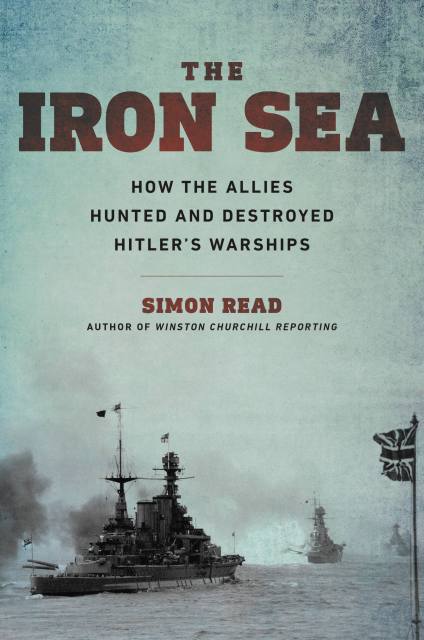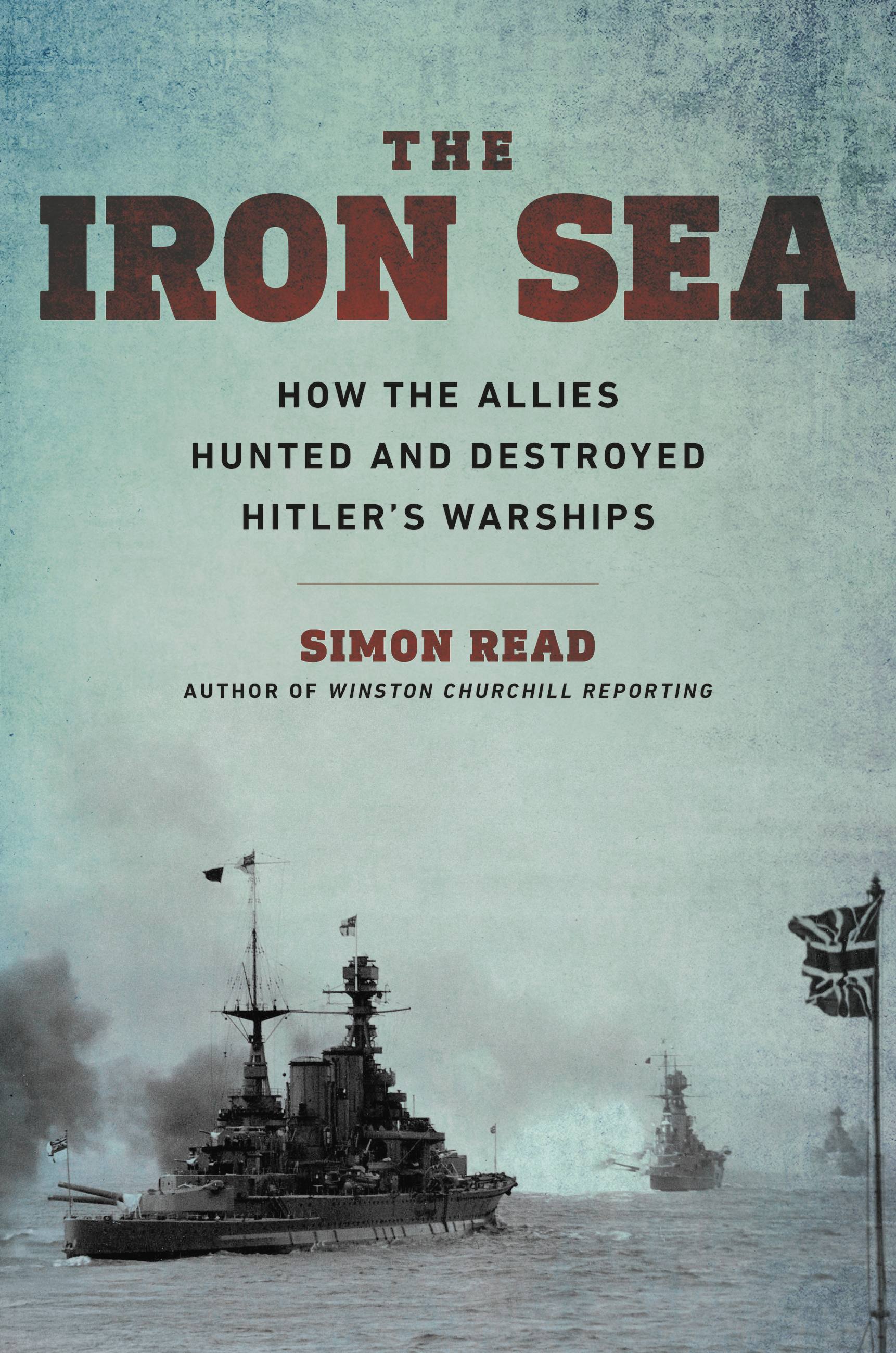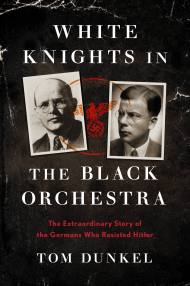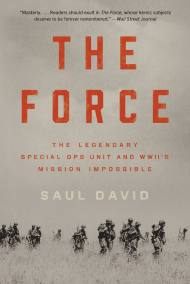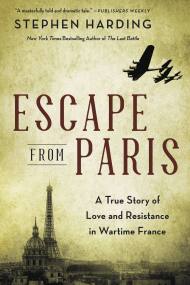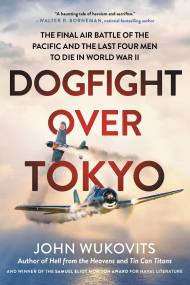Promotion
Use code MOM24 for 20% off site wide + free shipping over $45
The Iron Sea
How the Allies Hunted and Destroyed Hitler's Warships
Contributors
By Simon Read
Formats and Prices
Price
$14.99Price
$19.99 CADFormat
Format:
- ebook $14.99 $19.99 CAD
- Hardcover $30.00 $38.00 CAD
- Audiobook Download (Unabridged)
This item is a preorder. Your payment method will be charged immediately, and the product is expected to ship on or around November 3, 2020. This date is subject to change due to shipping delays beyond our control.
Also available from:
From the acclaimed military history author, this action-packed World War II history describes the Allies’ brutal naval engagements and daring harbor raids to destroy the backbone of Hitler’s surface fleet.
The sea had become a mass grave by 1941 as Hitler’s four capital warships — Scharnhorst, Gneisenau, Tirpitz, and Bismarck, the largest warship on the ocean — roamed the wind-swept waves, threatening the Allied war effort and sending thousands of men to the icy depths of the North Atlantic. Bristling with guns and steeled in heavy armor, these reapers of the sea could outrun and outgun any battleship in the Allied arsenal. The deadly menace kept Winston Churchill awake at night; he deemed them “targets of supreme consequence.”
The campaign against Hitler’s surface fleet would continue into the dying days of World War II and involve everything from massive warships engaged in bloody, fire-drenched battle to daring commando raids in German occupied harbors. This is the fast-paced story of the Allied bomber crews, brave sailors, and bold commandoes who “sunk the Bismarck” and won a hard-fought victory over Hitler’s iron sea.
Using official war diaries, combat reports, eyewitness accounts and personal letters, Simon Read brings the action and adventure to vivid life. The result is an enthralling and gripping story of the Allied heroes who fought on a watery battlefield.
Genre:
-
"Simon Read's The Iron Sea is a wonderful, rip-roaring account of one of the greatest hunts in history - the pursuit of Hitler's warships. You'll feel the lash of salt spray, the thunder of depth charges, the immense tension of the chase. A superb addition to the annals of naval WWII history."Alex Kershaw, New York Times bestselling author of The Liberator and The Longest Winter
-
"Prepare to journey back in time to the perilous early years of the Second World War, where Britain's lifelines depended on the destruction of four mighty German surface ships. Simon Read brilliantly retells the stories of the hunt for Hitler's warships in a single volume, which is crisply researched and brimming with vivid prose."Patrick K. O'Donnell, bestselling author of Washington's Immortals and The Unknowns
-
"Winston Churchill's greatest fear in World War II was of losing the battle of the Atlantic and Britain being starved into surrender. I felt tingles down my spine when I read of the feats of so very many ordinary men and women from so many walks of life who sank Hitler's battle fleet, and stopped that from happening.... Read's Iron Sea, with its scholarly research and scintillating prose style, will leave you full of pride for that extraordinary generation and their staggering achievement."Andrew Roberts, award-winning and bestselling author of Churchill: Walking with Destiny
-
"Simon Read's The Iron Sea is a riveting fast-paced drama about the havoc Hitler's surface fleet caused the Allies in World War II. Expertly researched and finely written this is a major new contribution to WW2 military history. Highly recommended!"Douglas Brinkley, New York Times bestselling author of American Moonshot: John F. Kennedy and the Great Space Race
-
"In The Iron Sea Simon Read brings readers straight into the heart of the tumultuous battle to control the Atlantic. Swarms of dive-bombers, lines of torpedoes cutting through inky black waters, the shrill cries of officers and sailors, the plumes of smoke and fire--all come viscerally to life in this narrative thriller."Neal Bascomb, New York Times bestselling author of The Winter Fortress and Faster
-
"Drawing on firsthand accounts from Allied and German sources, Read recreates the demise of each German warship in gripping, often poignant, prose. WWII buffs and naval history fans will be spellbound."Publishers Weekly, starred review
-
"A vivid and detailed analysis... The fast-paced narrative draws on a solid foundation of primary sources and moves easily from meta-themes of strategy to the experiences of the sailors and airmen of Allied and Axis powers... an engaging history recommended for all U.S. history and WWII collections"Library Journal
-
“[A] pulse-pounding narrative . . . A suspenseful, well-wrought account of battling ships at sea and grave wartime conditions.”Kirkus Reviews
- On Sale
- Nov 3, 2020
- Page Count
- 336 pages
- Publisher
- Hachette Books
- ISBN-13
- 9780306921704
Newsletter Signup
By clicking ‘Sign Up,’ I acknowledge that I have read and agree to Hachette Book Group’s Privacy Policy and Terms of Use
